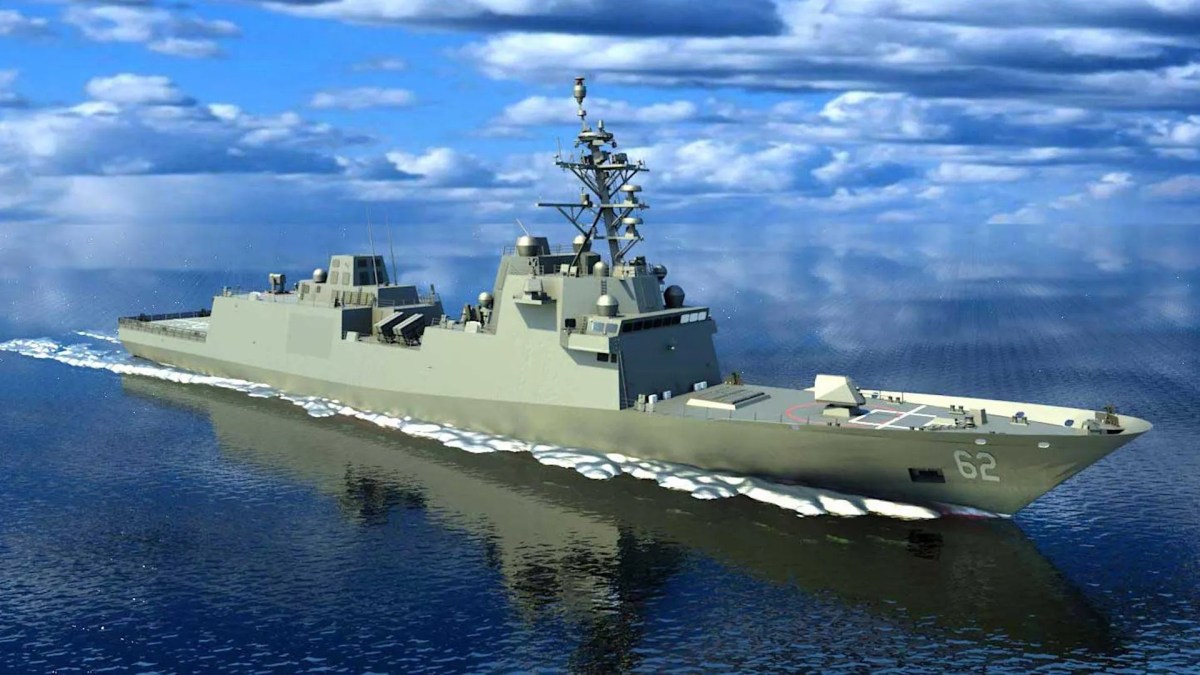I am continually baffled by the talking points pushed by journalists and armchair admirals that the Constellation program is some kind of failure due to a bunch of different issues, I think I spoke about this sometime last year but they keep harping on the same points. As much as I find it cathartic to watch the once vaunted Constellation get some sand in its eyes, a lot of the criticism in articles like that are utterly lacking both nuance and an informed idea of the issues going on with the program.
1.) Constellation was only supposed to be "modified in relatively minor ways" to keep the work on schedule and under budget.
I'm not sure where this talking point keeps coming from, as it fundamentally misunderstands the FFG(X) program and how the USN operates. People expected the USN to simply grab a design off the shelf and largely adopt it wholesale, that was never going to happen and was never stated from what I can see. To quote the RFI for the program:
Whatever was picked for the winner of FFG(X) was always going to be modified to meet the wants and needs of the USN, Underway mentioned a few posts ago that the USN does not change their requirements for things like survivability engineering, habitability, building specifications, machinery, etc for anybody and they are 100% correct. The USN has their own strict requirements and very few, if any, nations actually meet them. Italy sure as hell doesn't, hence the major changes to the baseline FREMM where they done things such as lengthening the hull, fitted more powerful generators and increased the weight of the vessel to allow for larger growth margins.
All of the talk about commonality with the baseline design also makes no sense, the USN is a very large entity that was always going to heavily modify their design, they would not and cannot rely on the Italians for parts commonality. Commonality between the French and Italian FREMM variants is also at 15%, which is exactly the same as what Constellation shares with the baseline Italian FREMM. Whoever proposed this supposed goal of 85% commonality is entirely out to lunch, given the European FREMM operators can't even manage anything approaching that.
2.) Constellation's design isn't finalized, why are they building it without that?
It is common for ships to have fabrication of parts and construction itself start before the design is completed, same for modifications to the design ongoing throughout parts of the building process. The famous Arleigh Burke class destroyers alongside the Zumwalt class destroyers are recent examples, with the first 5 ships of the former being built with the design at 50% completion while the latter started construction at 80% design completion. As long as you can keep things reasonably under control, there is no catastrophic issues with doing this. Especially as you start building the most mature blocks of the ship (keel blocks, engineering spaces, etc) first, you have more than enough time as production goes to finalize things.

You can see above from a 2023 assessment of modeling progress which sections are more mature than others, most of the primary hull modules are largely complete in the 3D modeling process atleast. Given how we're in April on 2025 now, it seems fairly obvious that much more design work has been completed in the meantime.
3.) This is all making Constellation delayed and late!
I would argue not really, given how the Marinette Marine Shipyard where these ships are being produced are swamped with work and has been actively suffering from various recruitment/retention issues within their workforce. Marinette has been building Freedom class LCS vessels since 2005, and has continued to do so until this very day, through the ongoing Constellation construction as well. They are just fitting out the last LCS now however, they are still actively building 4 modified Freedom class LCS (Multi-Mission Surface Combatant) for the Royal Saudi Navy. These 4 ships especially are taking away manpower, resources and yard space required for the Constellations, especially as the Saudi's are apparently always looking to modify and change their designs. The MMSC are overdue to be finished by quite sometime and are slowing down Constellation production a lot.
COVID also hit Marinette Marine the same as it did to our own Canadian yards, putting supply chains at risk, raising costs and slowing everything down further. When you combine all of these concerns with the fact that Constellation was given an unrealistically fast construction timeline and associated cost, it isn't surprising at all that those metrics weren't able to be reached.
I think you could successfully argue that at this point, it might have been a better idea for the USN to have just designed exactly what they wanted from scratch instead of doing this procurement of an off the shelf design to use as a base. With that said, such a design would have still ran into the same delays and shipyard issues of the Constellation regardless, so some of the delays would have been happening regardless.
The USN is too far into this procurement to scrap everything and start again without wasting considerable time, effort and money, something they desperately cannot afford to do with China rapidly rising.
From what I've gathered, that proposal specifically didn't get overly far. To my knowledge, we never ended up even seeing the NSC presented in a model or a rendering. Their spokespeople were infamous for dodging any questions as to specifics or much of anything about their design, it wasn't even entirely clear what they were proposing specifications wise. They received a contract to do further design work, but we never got anything out of that, especially after it lost.
The USN would have also been doing a lot of work to modify a hypothetical Legend class cutter frigate variant, given the differences in weapons specs and build/design specs between the USN and USCG.





